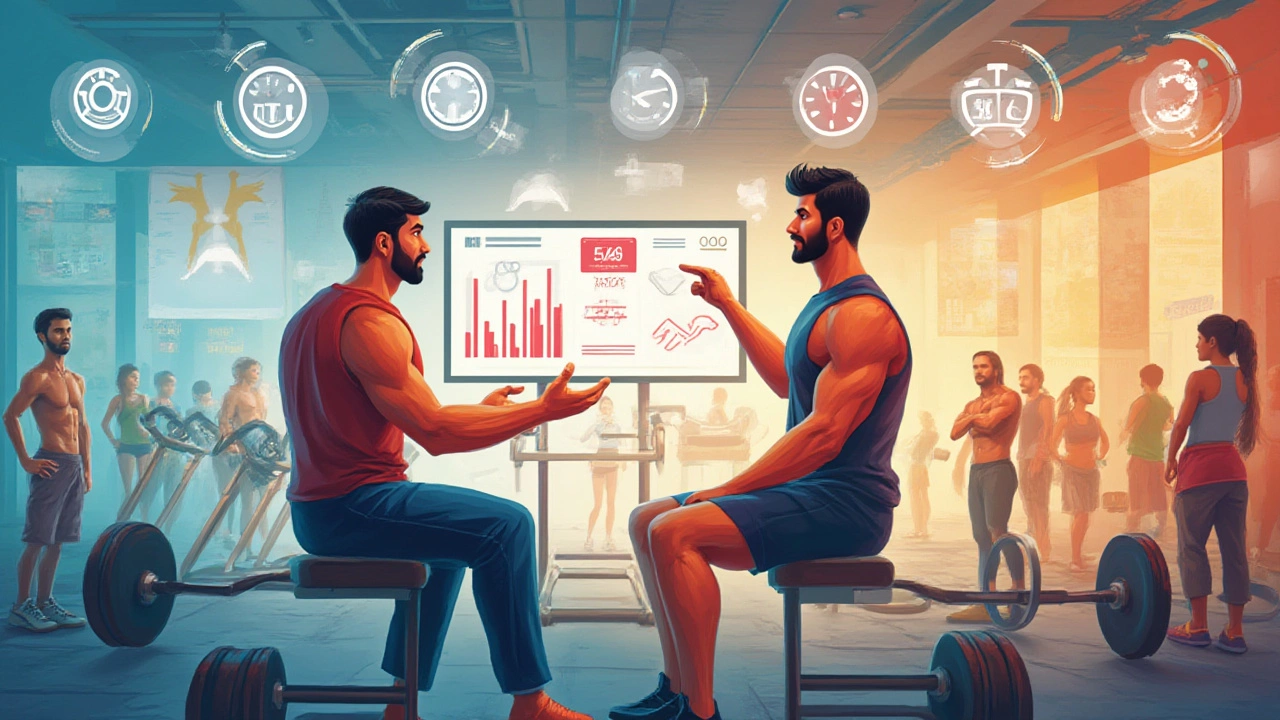How Long Should a Workout Be for Optimal Fitness Results?
 Jul, 25 2025
Jul, 25 2025
You probably know the feeling: you’ve only got 30 minutes, but all the gym influencers on Instagram seem glued to the squat rack for hours. Does a quick workout actually count? Should you stay longer to see some changes in the mirror, or is half an episode of Bluey enough to get the job done? The truth is, there’s no magic number, but there’s a lot to untangle once you start looking at what coaches, researchers, and parents (yup, shouting out the mums and dads) have learned.
Why Workout Length Became Such a Big Deal
The idea that a longer workout means better results has stuck for ages. It pops up everywhere, from old-school weightlifting forums to your mate at the park claiming he did a three-hour leg day. But the research? Not so straightforward. Back in the early 2000s, the American College of Sports Medicine started to clarify things. Their experts suggested adults aim for at least 150 minutes of moderate-intensity exercise a week. That doesn’t mean you need a daily marathon. You could break that down into five 30-minute sessions, or even ten 15-minute sessions—whatever works for you, really.
The Australian government shaped their own guidelines, too. Folks aged 18 to 64 should do muscle-strengthening work twice a week and aim for either 2.5 to 5 hours of moderate-intensity or 1.25 to 2.5 hours of vigorous-intensity activity per week. The main thing? Consistency beats marathon sessions every time. And intensity—that’s the secret sauce most people overlook. Research out of Sydney Uni found that just 12 minutes of really intense interval training can improve your fitness as much as a much longer low-key workout.
But here’s the twist really worth knowing: past a certain point, longer sessions start giving you less. You don’t keep getting fitter and stronger at the same rate as you add time. In fact, for busy parents or nine-to-fivers, too much training can even mess with your sleep and leave you feeling battered. Balance matters. Try telling that to Sadie when she’s got swimming lessons after school... but science totally backs me up!
Different Goals, Different Timers
It’s tempting to search for that perfect time—"How long should a workout be?"—but it actually depends on your goal. If you’re walking to boost your heart health, 20 to 40 minutes at a brisk pace can do wonders. If you want to build muscle, experts like Brad Schoenfeld (he’s published heaps on resistance training) say focus on lifting for 45 to 60 minutes, including rest between sets. The key is working hard during that time, not chasing the clock.
If you’re slimming down, shorter, more intense sessions (think HIIT) can torch calories and preserve muscle without eating up your day. In fact, a study in 2023 showed that people lost more body fat with twenty-minute HIIT routines than with hour-long steady-state jogging—probably because their bodies burned extra calories for hours after.
Performance athletes? Yeah, they train more—sometimes upwards of two hours a day. But they’ve got coaches, nutritionists, and, let’s be honest, a lot more time than the average person. For most of us, copying their routine is more likely to lead to burnout than six-pack abs.

What Science Says About the Sweet Spot
Here’s an unpopular truth: the perfect workout duration doesn’t exist for everyone. It depends on your body, your experience, what you want from exercise, even what you ate for breakfast. What is clear from decades of research is that working out shorter, but harder, can deliver equal—sometimes better—results than dragging it out. If you’re going to the gym, aim for 30 to 60 minutes. For a killer HIIT sesh, 15 to 30 minutes is plenty (as long as you’re actually pushing yourself).
Let’s break it down in a simple table. Here’s what some trusted guidelines say, with actual numbers:
| Workout Type | Recommended Duration (Session) | Frequency (Per Week) |
|---|---|---|
| Moderate Cardio | 30-45 min | 5 |
| HIIT | 15-30 min | 2-4 |
| Strength Training | 45-60 min | 2-4 |
| Yoga/Pilates | 30-60 min | 2-5 |
Just remember, quality trumps quantity every single time. If you’re slogging through 90 minutes without any real effort, you won’t beat the person giving their best for 30.
Troubleshooting Your Workout Schedule
If you’re super short on time (hellooo, school runs), don’t panic. Micro workouts—little bursts of exercise peppered throughout your day—are backed by some pretty cool new studies. Even three lots of 10 minutes can boost heart health and stamina. Setting up a quick circuit in your lounge room while dinner’s cooking? Yes, it counts! If you like the structure, block off 30 minutes, but don’t ditch the idea just because you don’t have a full hour free.
If you find yourself getting injured, burning out, or hating the thought of yet another spin class, you’re probably overdoing it. Listen to your body. Your best workout duration is the one that fits your life, your mood, and your actual goals—not what you read online or saw on someone’s social media.
If motivation is an issue, try tracking your sessions—not just how long, but how you felt, and what you achieved. That feedback can help you spot whether thirty focused minutes are doing more for you than an hour lost in your head. Apps like Strava, Apple Health, or even a paper diary work a treat for this. I use my phone’s timer for at-home circuits and sometimes let Sadie hit the alarm when we do family planks—she’s scarily honest about timing!

Tips to Fine-Tune Your Workout Time
Some things get overlooked when thinking about workout length. Warm-ups and cool-downs count. If you neglect them, you might save five minutes but set yourself up for a pulled muscle. Build five to ten minutes of both into your session. If you’re squeezing movement into a packed schedule, using compound exercises (like squats, lunges, push-ups) hits more muscles and burns more calories in less time.
Here are some practical tips to help you get the most from any session length:
- Prioritize quality over time—focus on how hard you’re working, not just the clock.
- Mix up your training styles, so you don’t plateau or get bored.
- Use a timer for intervals. Apps like Tabata Timer or Gymboss do this simply.
- Count your sets and reps, not just minutes in the gym.
- Get your gear set up before you start—no wasting time searching for your resistance bands while the clock ticks!
- Remember rest is vital—take a complete day or two off each week to let your body recover and get stronger.
Lastly, own your journey, not anyone else’s. Life in Sydney sometimes means spontaneous days at the beach or afternoons when everything’s too hectic—so work with what you’ve got rather than stressing about missing the ‘perfect’ session time. My best advice? Stay consistent, track what feels best for you, and remember that movement should make you feel good. Whether you’re smashing out a HIIT circuit before school pick-up or finally carving out an uninterrupted hour, the best workout is the one you can stick with.
